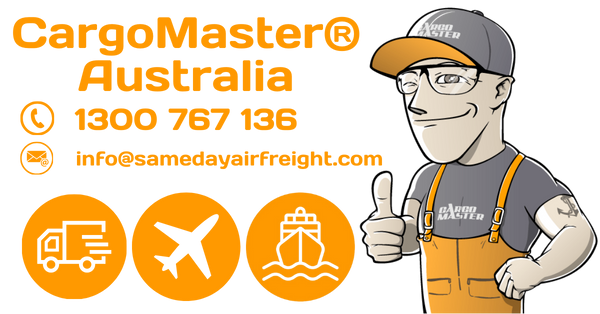Melbourne | Same Day Air Freight
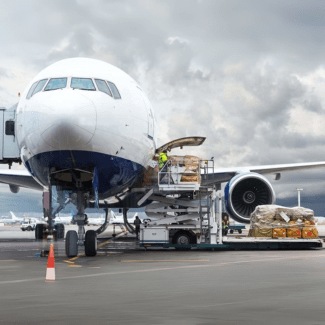 For businesses and individuals who cannot afford delays, CargoMaster delivers dependable same day air freight solutions from Melbourne Airport (Tullamarine) to destinations across Australia. With more than 30 years of expertise in freight forwarding, CargoMaster has earned its reputation as one of the most trusted names in urgent and time-critical transport. Whether your shipment is large, heavy, fragile, awkwardly shaped, or needs after-hours handling, our Melbourne air freight services ensure your cargo moves quickly and securely, every time.
For businesses and individuals who cannot afford delays, CargoMaster delivers dependable same day air freight solutions from Melbourne Airport (Tullamarine) to destinations across Australia. With more than 30 years of expertise in freight forwarding, CargoMaster has earned its reputation as one of the most trusted names in urgent and time-critical transport. Whether your shipment is large, heavy, fragile, awkwardly shaped, or needs after-hours handling, our Melbourne air freight services ensure your cargo moves quickly and securely, every time.
We understand that Melbourne is a bustling hub of commerce, manufacturing, and trade, and urgent air freight plays a vital role in supporting industries that rely on efficiency. With flights leaving Melbourne Airport daily, CargoMaster offers a range of options tailored to your schedule and requirements. From urgent packages bound for Sydney to heavy machinery destined for Perth or Adelaide, we make sure your freight travels on time and arrives as planned.
Our team operates 24 hours a day, seven days a week, giving clients the confidence that their critical cargo is in safe hands no matter the hour. This round-the-clock service is especially valuable for industries like mining, healthcare, automotive, and technology, where delays can be costly. When you choose CargoMaster for your same day air freight needs, you’re choosing a proven partner that takes the stress out of logistics.
With a focus on safety, compliance, and cost-effective transport, CargoMaster is equipped to handle even the most challenging freight scenarios. From packing and securing bulky cargo to navigating complex freight documentation, we ensure every detail is managed professionally. This commitment to precision is why so many businesses across Melbourne rely on CargoMaster for urgent freight solutions.
Sydney Melbourne Brisbane Adelade Perth Darwin
Comprehensive Same Day Air Freight Solutions
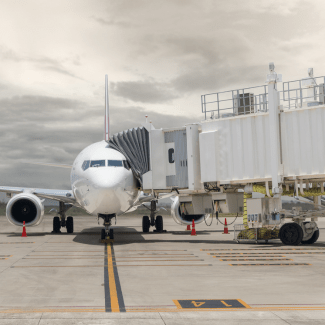 CargoMaster’s Melbourne same day air freight services are designed to accommodate all kinds of shipments, regardless of size or complexity. Whether you’re sending delicate, high-value goods or oversized industrial equipment, our team tailors logistics plans to suit your specific needs. With professional packing and securing services available, we guarantee that every item is prepared for safe air transport. This meticulous approach ensures that fragile, valuable, or irregularly shaped goods arrive intact and on time.
CargoMaster’s Melbourne same day air freight services are designed to accommodate all kinds of shipments, regardless of size or complexity. Whether you’re sending delicate, high-value goods or oversized industrial equipment, our team tailors logistics plans to suit your specific needs. With professional packing and securing services available, we guarantee that every item is prepared for safe air transport. This meticulous approach ensures that fragile, valuable, or irregularly shaped goods arrive intact and on time.
CargoMaster provides direct access to an extensive network that connects Victoria with major Australian cities, including Brisbane, Sydney, Adelaide, Perth, Canberra, and Darwin. We also extend our reach to regional centers, ensuring that even clients in harder-to-access areas receive the same level of reliable service. From Warrnambool to Mildura and beyond, our solutions provide vital links between Melbourne and Australia’s broader economy.
Our expertise extends to managing dangerous goods air freight. CargoMaster’s certified professionals handle all aspects of DG compliance, from documentation to packaging, ensuring hazardous materials are moved safely and without regulatory delays. With safety as a priority, we provide peace of mind for industries that depend on compliant dangerous goods transport.
By offering flexible freight options, we allow clients to select the most suitable services for their timeline and budget. Whether you need a charter flight dedicated to your shipment or space on a scheduled service, CargoMaster works closely with you to deliver efficient results. This versatility has positioned us as a leading choice for businesses that value both speed and reliability in air freight forwarding.
Melbourne Same Day Air Freight Network
 What makes CargoMaster’s Melbourne same day air freight service so effective is the strength and breadth of our nationwide network. From Melbourne, we connect directly to every major Australian city, as well as regional and remote areas. Our established flight routes and partnerships with trusted carriers mean we can move shipments rapidly, ensuring no time is lost between collection and delivery.
What makes CargoMaster’s Melbourne same day air freight service so effective is the strength and breadth of our nationwide network. From Melbourne, we connect directly to every major Australian city, as well as regional and remote areas. Our established flight routes and partnerships with trusted carriers mean we can move shipments rapidly, ensuring no time is lost between collection and delivery.
For urgent same day shipments, our most popular routes include Melbourne to Sydney, Brisbane, Adelaide, Perth, and Canberra. But our network does not stop there. We also service regional hubs such as Hobart, Launceston, and Darwin, alongside vital mining and industrial towns. This extensive coverage ensures clients in Victoria can send urgent freight across the country with confidence.
Regional and remote freight delivery is a cornerstone of our services. Mining operations, agricultural businesses, and construction projects often require fast delivery to locations outside major cities. CargoMaster ensures that even freight destined for challenging destinations receives the same commitment to speed, safety, and reliability as cargo bound for capital cities.
Our Melbourne air freight services are built for consistency, with systems in place to manage even last-minute requests. From the moment you contact us, our logistics professionals spring into action, arranging the uplift and ensuring all paperwork, security checks, and compliance measures are handled without delay. This seamless coordination is what makes CargoMaster the trusted choice for urgent air freight.
More Than Same Day Air Freight
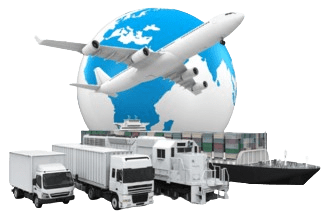 CargoMaster’s services extend well beyond same day deliveries. We offer a complete suite of freight forwarding solutions, including overnight air freight, international air freight, sea freight, and customs clearance. By providing end-to-end logistics management, we simplify the shipping process for clients, handling everything from packaging and documentation to final delivery.
CargoMaster’s services extend well beyond same day deliveries. We offer a complete suite of freight forwarding solutions, including overnight air freight, international air freight, sea freight, and customs clearance. By providing end-to-end logistics management, we simplify the shipping process for clients, handling everything from packaging and documentation to final delivery.
For international businesses, CargoMaster offers cost-effective global freight forwarding services, supported by world-class tracking systems and strategic partnerships with airlines and carriers. Whether you are exporting goods to Asia, importing from Europe, or managing supply chains across North America, our team ensures smooth, affordable, and efficient transport solutions.
We also specialise in project logistics, helping companies manage complex and large-scale freight movements. From heavy industrial machinery to specialised equipment, our team provides tailored solutions that align with project timelines and budgets. By combining industry know-how with flexible service options, CargoMaster delivers results that meet the most demanding requirements.
At the heart of our services is a dedication to customer satisfaction. We understand that every shipment matters, whether it’s a single urgent package or an ongoing logistics operation. Our goal is to deliver not only freight but also confidence, knowing that your cargo is in expert hands from start to finish.
Why Choose CargoMaster
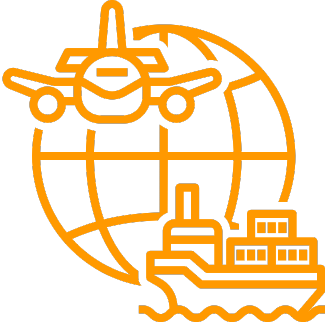 CargoMaster’s reputation is built on decades of experience and a deep commitment to customer service. Our clients benefit from transparent tracking systems, allowing them to monitor shipments at every stage. With clear communication and reliable updates, you are never left guessing about the status of your cargo.
CargoMaster’s reputation is built on decades of experience and a deep commitment to customer service. Our clients benefit from transparent tracking systems, allowing them to monitor shipments at every stage. With clear communication and reliable updates, you are never left guessing about the status of your cargo.
We work with a trusted network of carriers and partners, ensuring every consignment is handled with precision. By leveraging industry relationships and advanced logistics technology, CargoMaster provides a combination of speed, safety, and cost-effectiveness that few competitors can match.
Our Melbourne team brings unmatched knowledge of both domestic and international freight forwarding. By combining local expertise with global capabilities, we provide comprehensive logistics solutions that keep businesses running smoothly. From time-critical deliveries to international supply chain management, we are here to support your growth.
Choosing CargoMaster means partnering with a freight company that values reliability, transparency, and innovation. We pride ourselves on being more than a service provider. We are a logistics partner committed to helping clients achieve their goals through seamless, efficient, and affordable freight solutions.
Frequently Asked Questions
What is Same Day Air Freight?
Same Day Air Freight is a service that ensures urgent cargo is transported and delivered on the same day it is shipped. It is ideal for time-sensitive shipments that need to be delivered quickly, often across cities or regions. CargoMaster provides same-day air freight services across Perth and nationwide, ensuring fast, reliable delivery.
How fast can my shipment be picked up and delivered?
CargoMaster offers 24/7 same-day air freight services, meaning your shipment can be picked up within hours of booking and delivered to its destination the same day. Delivery times depend on the origin, destination, and the availability of flights, but we work to ensure the quickest possible turnaround.
Can CargoMaster handle large and heavy freight?
Yes, CargoMaster has extensive experience in moving large, heavy, and awkward shipments. We specialize in handling all types of freight, from small parcels to bulky and oversized cargo. Our logistics experts will work with you to ensure your goods are safely transported.
Does CargoMaster offer services to remote areas?
CargoMaster provides same-day air freight services to both metropolitan and regional locations across Australia. We service remote areas, including the northwest and mining regions of Western Australia, such as Karratha, Port Hedland, and Kalgoorlie.
What types of goods can be transported via same-day air freight?
CargoMaster can transport a wide range of goods, including time-sensitive documents, medical supplies, machinery, and even dangerous goods. Our team is experienced in handling fragile, valuable, and hazardous materials, ensuring compliance with all safety regulations.
Are there any restrictions on what can be shipped?
Certain restrictions apply to air freight, such as hazardous materials or items that require special permits. CargoMaster is equipped to handle dangerous goods and will assist in preparing the necessary documentation for safe and compliant transportation.
What documentation is required for same-day air freight?
For most shipments, a standard air waybill is required, along with any necessary documentation specific to the cargo, such as Dangerous Goods declarations. CargoMaster will assist you in preparing and processing the required paperwork to ensure a smooth and compliant shipping process.
How does CargoMaster ensure the safety of my shipment?
CargoMaster uses advanced tracking systems and works with trusted air carriers to ensure your shipment is monitored from pickup to delivery. Our experienced team carefully packs and handles all cargo to ensure it is secure throughout the entire journey.
How do I book same-day air freight with CargoMaster?
Booking is easy! Simply call CargoMaster at 1300 767 136, and our team will guide you through the process. We will assess your needs, provide a quote, and arrange for the immediate collection and shipment of your cargo.
Additional Information
(Click the +/- plus/minus symbols to expand/collapse.)
HAZARDOUS AIR FREIGHT
Hazardous Air Freight
This list does not cover all types of hazardous air freight and is not exhaustive. General items listed below may be found in baggage and could have hazards that are not immediately apparent. There are strict regulations for lodging hazardous air freight and compliance with dangerous goods regulations.
Typical Examples of Hazardous Air Freight
| Expeditionary equipment | Pressurised containers | Magnets |
| Vaccines | Ammunition | Engines (contain fuel and that are not cleaned, purged and sealed) |
| Solvents, adhesives | Dry Ice | Mining equipment |
| Pesticides | Tool Boxes (compressed gases, aerosols) | Passenger baggage (containing flammable gas or liquid lighter refuel, camping stove cylinders) |
| Switches in electrical equipment | Electrical equipment | Diagnostic specimens |
| Diving equipment | Frozen foods (packed in solid dry ice) | Thermometers (containing mercury) |
| Pharmaceuticals | Motor Vehicle parts | Frozen Embryos |
| Swimming pool chemicals | Chemicals | Photographic Supplies |
| Aerosols | Refrigerators (may contain gases or chemicals) | Refrigerators (may contain gases or chemicals) |
| Compressed non-flammable gas | Machinery parts | Swimming pool chemicals |
| Batteries | Frozen foods (packed in solid dry ice) | |
| Breathing Apparatus | Mining equipment |
HAZARD LABELS DANGEROUS GOODS (DG)
Hazard Labels for
Dangerous Goods (DG)
The international community has established a classification system for easy identification of dangerous goods. These goods fall into nine primary classes, and some classes are further divided to address specific risks. Each class/division has a corresponding label that accurately represents the nature of the hazard. These labels must be attached to the package during transport and remain intact throughout the journey. Take a look at the illustrated examples below to understand how these labels effectively communicate the potential dangers.
Under regulations, labels must be clearly visible on the outside of the package and must stay on the package while in transit.
You can often find labels printed on most inner packages such as:
- aerosol cans
- bottles of bleach
- containers of thinners
- tins of paint
- many other products which are available at supermarkets and hardware stores.
Below are the 9 hazard labels for the 9 classes of dangerous goods.
Class 1 Explosives

This includes items such as:
- explosive substances
- pyrotechnic devices
- ammunition
- fireworks
- detonators.
Class 2 Gases

These can be transported as:
- compressed
- liquefied
- refrigerated liquefied
- gas in solution.
This includes aerosols. Class 2 has 3 divisions:
- Division 2.1 - flammable gases such as:
- butane
- propane
- Division 2.2 - non-flammable, non-toxic gases such as:
- oxygen
- liquid nitrogen
- compressed air
- Division 2.3 - toxic gases such as:
- chlorine
- hydrogen sulphide.
Class 3 Flammable liquids

This includes liquids with a boiling point of 35⁰ C or less, or a flash point of 60⁰ C or less such as:
- petrol
- alcohol
- perfumes
- essential oils
- hand sanitiser
- paints.
Class 4 Flammable solids

These are substances that can spontaneously combust and substances, that when they come into contact with water or emit flammable gases. Class 4 has 3 divisions:
- Division 4.1 - flammable solids such as:
- hexamine solid fuel tablets for camping stoves
- self-reactive substances
- desensitised explosives
- Division 4.2 - substances that can spontaneously combust under normal air transport conditions include:
- camphor
- sulphur
- matches
- Division 4.3 - substances that emit flammable gases when they come into contact with water include:
- sodium
- zinc particles
- activated carbon.
Class 5 Oxidising substances and organic peroxides

These substances are not necessarily combustible on their own but can react dangerously with other substances. Class 5 has 2 divisions:
- Division 5.1 - oxidising substances that may not be necessarily combustible, but they may readily yield oxygen and cause other materials to combust, such as:
- hydrogen peroxide
- ammonium nitrate
- potassium chlorate
- sodium nitrate
- Division 5.2 - organic peroxides are thermally unstable and can emit heat and give off harmful or flammable vapours. They can also be liable to explosive decomposition and react dangerously with other substances. Examples are:
- acetyl acetone peroxide
- benzoyl peroxide
- peracetic acid.
Class 6 Toxic and infectious substances

These substances can cause sickness, injury or death if consumed. Class 6 has 2 divisions:
- Division 6.1 - toxic substances that can cause death, injury or to harm human health if swallowed, inhaled or by skin contact, such as:
- chloroform
- arsenics
- cyanides
- cytotoxic waste
- barium compounds
- pesticides
- Division 6.2 - infectious substances that contain or are expected to contain pathogens that can cause disease in humans or animals, including:
- medical or clinical waste
- patient specimens
- genetically modified organisms
- infectious substances
- infected animals.
Class 7 Radioactive materials

These are substances that emit invisible ionising radiation that can be harmful to humans and animals. It can cause objects such as aircraft and equipment to become contaminated if not packaged and handled correctly, such as:
- uranium
- radioactive ores
- isotypes
- radium
- cesium
- x-ray equipment
- medical equipment or parts.
Class 8 Corrosives

These substances can cause irreversible damage if they come into contact with skin and could destroy other freight, or materially damage containers or aircraft. This includes:
- acids
- corrosive cleaners
- battery fluid
- formaldehyde
- hydrofluoric acid.
Class 9 Miscellaneous

These are substances and articles which, during air transport, present a danger not covered by other classes. There are 2 types of handling labels – 1 for lithium battery shipments, and another for all other miscellaneous dangerous goods. This class includes:
- lithium batteries
- battery powered vehicles
- battery powered equipment
- first aid kids
- environmentally hazardous substances
- dry ice
- magnetised materials
- asbestos.
Handling labels
In addition to hazard labels, trained staff must attach handling labels where needed. Staff must use these 4 handling labels with the appropriate hazard labels:
Cargo aircraft only

This label is used to show that the load cannot be carried on a passenger aircraft.
Cyrogenics

This label is used on liquefied gases, such as the ones in Class 2.
This way up

This label ensures a load is placed the correct way up and can be used for non-dangerous goods.
Magnetised material

This label ensures that the load is kept away from the aircraft compass detector unit while being loaded and unloaded.
IATA CODES FOR MAJOR AUSTRALIAN AIRPORTS
| Airport | IATA code | ICAO code |
| Adelaide | ADL | YPAD |
| Alice Springs | ASP | YBAS |
| Brisbane | BNE | YBBN |
| Cairns | CNS | YBCS |
| Canberra | CBR | YSCB |
| Darwin | DRW | YPDN |
| Gold Coast | OOL | YBCG |
| Hobart | HBA | YMHB |
| Launceston | LST | YMLT |
| Melbourne (Avalon) | AVV | YMAV |
| Melbourne (Tullamarine) | MEL | YMML |
| Perth | PER | YPPH |
| Sunshine Coast | MCY | YBSU |
| Sydney | SYD | YSSY |
| Townsville | TSV | YBTL |
INTERNATIONAL AIRPORTS
|
|
GLOSSARY OF AIR FREIGHT TERMS AND ABBREVIATIONS
| A2A | Airport-to-airport |
| A2D | Airport-to-door |
| ADV | Advise, Advised, Advising |
| AEA | Association of European Airlines (see the page “Interest Organisations” of this website also) |
| Airline | Company operating aircraft between steady origin and destination airports |
| Airmail | Mail travelling by air |
| Air Operator | Company operating aircraft |
| Airport-to-airport | Transport from an airport of origin to an airport of destination |
| Allotment | Assigned volume on board of a flight / day |
| AOG | Aircraft On Ground ; materials expedited for repair of a grounded aircraft |
| AP | Airport |
| ARR | Arrive, Arrived, Arrival |
| ARR | Also a C2K milestone: ARR = cargo and documents arrived at airport of destination |
| ATA | Air Transport Association (see the page “Interest Organisations” of this website also) |
| ATA | Actual Time of Arrival |
| ATD | Actual Time of Departure |
| Authorisation | The commission to a certain person or body to act on behalf of another person or body ; the person or body can be authorised e.g. to issue air waybills or to collect freight |
| AVI | Live Animal(s) |
| AWB | Air Waybill |
| Backlog | Amount of goods still to be delivered or received and for which the planned or agreed date has expired |
| BAG | Baggage |
| Belly | Lower-deck cargo hold of an aircraft |
| BIG | Outsized cargo |
| Blocked-space agreement | A continuous reservation (allotment) for space at one or more flight / date combinations with an airline |
| Bonded Goods | Goods on which the customs duty has not yet been paid, and which therefore, are under the control of customs; usually in a Bonded warehouse. |
| Bonded warehouse | A depository for goods on which the customs duty has not been paid ; the warehouse proprietor must provide a bond (often in the form of a bank warranty or a mortgage) to the customs authorities as a security for any duties which may not be paid by the customer |
| Booking | Request for reservation of space on a flight/day, (to be) confirmed by the airline |
| Break Bulk Agent | A forwarder breaking the bulk: taking care of the unpacking and sorting of goods after the flight |
| Breakdown List | List of shipments carried in one consolidation (see also: Consolidation Manifest) |
| Broker | Person who acts as an agent or intermediary in negotiating contracts ; sometimes refers to a forwarder role |
| Bulk Cargo | Loose cargo not loaded on an ULD |
| C2K | Cargo 2000 (see the “Cargo 2000” page of this website) |
| Cargo Aircraft | Aircraft built with the purpose of carrying nothing else than cargo |
| Cargo assembly | The separate reception of parcels or packages and the holding of them for later dispatch as one consignment ; consolidator role |
| Cargo Disassembly | The separation of one or more of the parcels or packages that are part of a consignment for further distribution ; break bulk role |
| Carriage | Transport ; the process of conveying cargo from one point to another |
| Carrier | The party responsible for transport of goods from one point to another, this can be for example an airline or a forwarder (as a NVOCC) |
| CASS | Cargo Accounts Settlement System |
| CAO | Cargo Aircraft Only |
| CC | Charges Collect ; pay at moment of collection of the goods |
| CCS | Cargo Community System ; information system integrating the communication between air cargo parties at an airport |
| Certificate of Origin | A certificate proving the country of original production of goods ; used for customs declaration purposes |
| Charges collect | Charges as stated on the air waybill to be collected from the consignee |
| Charges prepaid | Charges as stated on the air waybill to be collected from the shipper |
| Claim | A written complaint about the execution of a contract of transportation by a carrier, combined with a demand for financial compensation |
| Classifying | Assigning the right import classification number to goods as part of the customs declaration process |
| CLR | Clear |
| CNEE | Consignee |
| COLL | Collect, Collected, Collecting |
| COMAT | Company Material (non revenue cargo) |
| Combi | Combi Aircraft, combining transport of passengers and cargo on the main-deck |
| Commodity | Indication of the type of goods ; commodities are coded according to the harmonised system |
| Commodity code | Code used in the Harmonised System for the classification of goods, which are most commonly produced and traded |
| Complaint | An official statement from a customer to a carrier about his unhappiness with the service or operation of the service provider |
| Consignee | The person or company that is physically and administratively responsible for accepting the goods at final delivery |
| Consolidation | A collection of shipments belonging to different shippers travelling to one destination or area to be distributed to several consignees |
| Consolidation Manifest | List of shipments carried in one consolidation |
| Consolidation Rates | Rates as given by a consolidator / forwarder |
| Consolidator | A forwarder consolidating shipments before a flight ; these shipments belonging to different shippers and travelling to one destination or area in order to be distributed to several consignees after the flight |
| Courier | Company that carries envelopes and parcels up to 75 kg from door to door ; air transport is generally outsourced to airlines |
| Courier Rates | Rates as given by a courier |
| CPTY | Capacity |
| CRN | Customs Release Note |
| Customs Agent/Broker (Certified) | Party certified to handle the customs clearance on account of importers / exporters |
| Customs invoice | (Pro forma) Invoice for import declaration (customs and statistics) purposes, stating the commercial price, added with the costs for freight, insurance and packing etc., terms of delivery and payment |
| Customs value | Value of goods to be imported for import declaration (customs and statistics) purposes |
| D2A | Door-to-airport |
| D2D | Door-to-door |
| Dangerous Goods | Goods that can be hazardous for health, flight-safety or materials |
| DAP | A C2K key performance indicator: DAP = Delivered As Promised (NFD in full and on time statuses are achieved) |
| DEP | A C2K milestone: DEP = cargo and documents departed at airport of origin |
| DEPT | Department |
| DG | Dangerous Goods |
| DGR | Dangerous Goods Regulations (IATA) |
| Dimensional Weight (Conversion) | Concept adopted by the transportation industry worldwide as a uniform means of establishing a minimum charge for the cubic space a package occupies ; the volume is converted into a (higher) weight / price class |
| DIMS | Dimensions |
| DIP | Diplomatic mail |
| DLV | Deliver, Delivered, Delivering |
| DLV | Also a C2K milestone: DLV = cargo and documents delivered to customer (forwarder) |
| DOCS | Document(s), Documentation |
| Domestic transport | Transport within a country |
| Door-to-door | Transport from an initial shipper’s house address to a final consignee’s house address |
| Duty | Tax imposed on goods imported from another country |
| EDI | Electronic Data Interchange |
| EDIFACT | Electronic Data Interchange For Administration, Commerce and Transport ; a specific EDI protocol |
| e-Freight | Electronic freight documents project from IATA ; e-Freight aims to take the paper out of the air cargo supply chain and -processes and replace it with cheaper, more accurate and more reliable electronic messaging ; facilitated by IATA, the project is an industry-wide initiative involving carriers, freight forwarders, ground handlers, shippers and customs authorities |
| Electronic Data Interchange | The interchange of electronic data, structured following an agreed protocol, between the automated information system of different parties |
| Embargo | An embargo on a certain kind of goods means these goods will not be transported by the airline, often for flight-safety reasons |
| Equipment | Materials needed to handle or transport goods |
| ESC | European Shippers’ Council (see the page “Interest Organisations” of this website also) |
| ETA | Estimated Time of Arrival |
| ETD | Estimated Time of Departure |
| Expediting | Forwarding goods (in less than the normal lead time) |
| Expeditor | Forwarder |
| FAK | Freight All Kinds |
| FAK-Rates | Rates for Freight All Kinds |
| FAP | A C2K key performance indicator: FAP = Flown As Planned (the complete shipment has flown at or before the last planned flight with a maximum 12 hour delay) |
| FCL | Full Container Load |
| FDCA | Found Cargo |
| FFM | Freight Forwarding Message (electronic) |
| FIATA | International Federation of Freight Forwarders Associations (see the page “Interest Organisations” of this website also) |
| FLT | Flight |
| Forwarder | Company specialized in providing door-to-airport transport, arranging connecting air transport and/or airport-to-door transport for parcels and consolidations > 75 kg or up to anything that fits in an aircraft ; the air transport is generally outsourced to airlines and sometimes aircraft operators or air charter companies |
| Forwarder network | A network existing of different smaller to medium sized forwarding companies all over the world working together |
| Freighter | Aircraft built with the purpose of carrying nothing else than cargo |
| FSU | Freight Status Update |
| Fuel Surcharge | Surcharge added to the cargo rate to cover the additional costs of increasing fuel-prices ; these will generally follow a certain index |
| Full charter | Chartering the full available volume of an aircraft or flight/day |
| Full Container Load | Container fully loaded, generally with goods belonging to one party |
| Full freighter | Aircraft built with the purpose of carrying nothing else than cargo |
| FWB | Electronic air waybill message |
| FWB | Also a C2K milestone: FWB = the shipment is booked at the airline, next an electronic air waybill is generated by agent (forwarder) ; this creates the so-called route map in C2K in which all the steps are followed |
| FYI | For Your Information |
| General Cargo Rates | Rates for all different kinds of cargo, not falling into a specific handling and/or rate category |
| GSA | General Sales Agent |
| GSF | Global Shippers Forum (see the page “Interest Organisations” of this website also) |
| Handling Agent | Agent handling the ramp and/or warehouse cargo operation for an airline |
| Harmonised System | A numeric multi purpose system for the classification of goods with its six digits covering about 5000 descriptions of the products or groups of products most commonly produced and traded, designed for customs purposes, but can also be used for statistics, transport purposes, export, import and manufacturing; the international convention on the HS was established under auspices of the World Customs Organisation in 1983 |
| Haulage | Inland transport of cargo |
| Haulier | Road carrier |
| HEA | Heavy Cargo |
| HAWB | House Air Waybill |
| House Air Waybill | The shipment contract between the end-customer and the forwarder (see the page “Forwarding Out” of this website for further purposes and explanation) |
| Hub | Central point in a transport system or network |
| HUM | Human remains |
| HWB | House Waybill |
| IATA | International Air Transport Association (see the page “Interest Organisations” of this website also) |
| IATA-Agent | An IATA certified agent |
| ICAL | Inbound Cargo Action List |
| ICAO | International Civil Aviation Organisation (see the page “Interest Organisations” of this website also) |
| ICE | Dry Ice Shipment |
| IN | Inches |
| Inco terms | Internationally agreed set of standard delivery terms |
| Integrator | Carrier integrating different modes of transport to form a door-to-door transport or supply chain ; this term mostly refers to the large international express companies who’s core business is to carry envelopes and parcels up to 75 kg, often overnight or even same day |
| Intermodal Transport | The movement of cargo in a supply chain by more than one mode of transport ; for example road/air or sea/air transport |
| INV | Invoice |
| ISA | If Space Available |
| KG | Kilos |
| L/C | Letter of Credit |
| LCL | Less than Container Load |
| Less than Container Load | Container partly filled with goods from one party, or an amount of goods that is not sufficient to fill one container and will therefore likely be consolidated |
| LHO | Living Human Organs / Blood |
| License, import/export | Governmental permit to import / export certain goods under certain conditions |
| Line item | Order line, each line on a packing list or invoice to be declared for customs |
| Load factor | The extent to which the aircraft (weight-, volume-, ULD-) capacity is efficiently utilized (to generate profit) |
| LOC | Location |
| Loose cargo/shipments | Cargo / shipments not loaded on an ULD |
| Lower Deck | The (cargo) deck below the main deck or upper deck of an aircraft |
| LT | Local Time |
| Main deck | Upper deck ; the (cargo) deck above the lower deck of an aircraft |
| Manifest, flight | Document listing the air waybills and a specification of the related goods carried on a flight |
| Master Air Waybill | The shipment contract between the forwarder and the airline (see the page “Forwarding Out” of this website for further purposes and explanation) |
| MAWB | Master Air Waybill |
| MFST | Manifest |
| Minimum Rate | Rate to cover the basic costs of carrying a shipment |
| MSG | Message(s) |
| Network Forwarder | A large forwarding company with worldwide branches |
| NFD | A C2K milestone: NFD = cargo and documents ready for pick-up at airline (handler), the customer (forwarder) is notified |
| NND | Notice of Non Delivery |
| NON-IATA | Airline or agent that is not a member of IATA |
| Nose loading | Loading cargo through the cargo door in the nose of an aircraft |
| Notify address | Address of a party other than the consignee to be notified of arrival of the goods |
| Notify party | Party other than the consignee to be notified of arrival of the goods |
| NOTOC | Notification To Captain ; list for the captain of the aircraft with goods carried on board |
| N-Rates | Rates for shipments with weights up to 45 kg |
| NVOCC | Non Vessel Operating/Owning Cargo Carrier ; in case of Air Cargo a Carrier (e.g. a Forwarder or Consolidator) who issues Air Waybills for the carriage of cargo on aircraft which he does not operate or own |
| OAG | Official Airlines Guide |
| OB | On Board |
| Oversized Cargo | Cargo that exceeds the dimensions of an ULD |
| Package | Packed piece of cargo |
| Packing list | A list for customs declaration and consignment purposes stating number and kinds of packages being shipped, totals of gross, legal, and net weights of the packages, marks and numbers on the packages, contents and part-/serialnumbers |
| Pallet | A (standardized) platform on which goods can be stacked for transport or warehouse handling purposes |
| Pallet, aircraft | A (standardized) platform on which goods can be stacked for air transport purposes |
| Pallet net | A net used to secure the cargo on the aircraft pallet |
| Parcel | Package |
| Part charter | Chartering of a part of the available volume on an aircraft or flight/day |
| Part shipment | Part of a shipment that travels on a different flight and/or day than the rest of the shipment due to available capacity with the airline |
| PAX | Passenger(s) |
| Payload | The (cargo) load that can be carried by an aircraft (to generate revenue) |
| PC | Piece(s) |
| PER | Perishable Cargo |
| PFI | Pro Forma Invoice |
| POA | Proof Of Acceptance ; legal proof a shipment has been accepted by a party |
| POD | Proof Of Delivery ; legal proof a shipment has been delivered by a party |
| POD | Place Of Delivery |
| PP | Charges Prepaid |
| PPD | Prepaid |
| Pre-alert | Message stating the current and or expected status of the goods |
| Principal | The customer ordering the transport or related services |
| PSH | Part Shipment |
| QNTY | Quantity |
| Q-Rates | Rates with a quantity discount |
| RCF | A C2K milestone: RCF = cargo has arrived in the cargo bay at final destination ; cargo and airwaybill are administratively received in the system |
| RCPT | Receipt, Reception |
| RCS | A C2K milestone: RCS = cargo and documents are received ‘Ready For Carriage’ and accepted by airline (handler) |
| Ready For Carriage | (By Air) The goods are correctly packed and labeled, and customs cleared, with the right documents attached |
| Ready For Transport | (By Road) The goods are correctly packed and labeled, with the right documents attached |
| RFC | Ready For Carriage |
| RFT | Ready For Transport |
| Routing | The path that is (to be) followed by the goods from shipper to consignee |
| RUSHR | Rush Reply |
| SASPO | As Soon As Possible |
| SAWB | Substitute Air Waybill |
| Security Surcharge | Surcharge added to the cargo rate to cover the additional costs of the increasing number of security checks and related administration that are legally required by the authorities |
| Shipper | The person or company that is physically and administratively responsible for shipping the goods ; for an airline in most cases a forwarder will be the shipper, for a forwarder the shipper is a third party, for example a trading company, a manufacturer, etc. |
| Shipper’s Letter of Instruction | Document issued by the shipper to instruct and authorize the forwarder to forward and declare goods on his behalf ; contains all shipment details needed to facilitate these services |
| SHPMNT | Shipment |
| Side loading | Loading cargo through a cargo door in the side of an aircraft |
| Skid | Pallet |
| S/L | Short Loaded |
| SLI | Shipper’s Letter of Instruction |
| SSPD | Short Shipped ; stayed behind |
| TACT | The Air Cargo Tariff ; publication of official airline tariffs |
| TBA | Time Before Arrival |
| TBD | Time Before Departure |
| TEMP | Temperature |
| TIACA | The International Air Cargo Association (see the page “Interest Organisations” of this website also) |
| TILNA | Tilting Not Allowed |
| TILTA | Tilting Allowed |
| Time Slot | The agreed time to collect or deliver goods |
| Tonne Kilometer | One tonne (1000 kg or 2204.6 lb) metric flown one kilometer ; productivity indicator |
| TRA | Transit |
| Tracing | Retrieving (information on) the status of goods and documents |
| Tracking | Regular checking on the status of goods and documents |
| Track & Trace | Automated regular retrieval of (information on) the status of goods and documents and checking these against the agreed norms |
| Transfer cargo | Transfer of cargo from one flight to another |
| Transito / Transit cargo | Transfer of cargo from one flight to another |
| TRM | Transfer Manifest |
| TTL | Total |
| ULD | Unit Load Device |
| ULD, contoured | Unit Load Device shaped to exactly fit in an aircraft |
| UNACC | Unaccompanied |
| Unit Load Device | Standardized air cargo loading equipment (pallet, container) |
| Upper deck | Main deck ; the (cargo) deck above the lower deck of an aircraft |
| VAL | Valuable cargo |
| VAT | Value Added Tax |
| VOL | Volume |
| Volume charge | Air transport charge based on the volume of goods instead of the actual weight (see “Dimensional Weight” and “Weight charge” also) |
| VUN | Vulnerable cargo |
| Weight charge | Air transport charge based on the actual weight of the goods (see “Dimensional Weight” and “Volume charge” also) |
| Weight & Balance | Management of the weight and allocation of cargo, passengers and fuel for a flight |
| W/H | Warehouse |
| XPS | Priority Small Package |
| XS | In Excess |
| Yield management | The process of maximising the contribution (revenue) of the (transport & handling) network, equipment, infrastructure and resources |
UNIT LOAD DEVICES (ULD)
Types of Unit Load Devices Used in Australia
AKE Container
- Type: AKE CONTAINERATA Code: LD3
- Internal Volume: 152 cu. ft. 4.3 mc
- Weight Limit: 1,588 kg
- Loadable Aircraft Type: 747, 747F, 777, Airbus
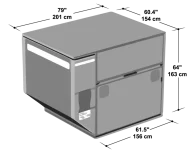 AAU Container
AAU Container
- Type: AAU CONTAINER
- ATA Code: LD29
- Internal Volume: 505 cu. ft. 14.3 mc
- Weight Limit: 4,626 kg
- Loadable Aircraft Type: 747, 747F
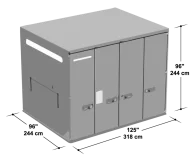 ALF Container
ALF Container
- Type: ALF CONTAINER
- ATA Code: LD6
- Internal Volume: 310 cu. ft. 8.78 mc
- Weight Limit: 3,175 kg
- Loadable Aircraft Type: 747, 747F,777, Airbus
 AMA Container
AMA Container
- Type: AMA CONTAINER
- ATA Code: M1
- Internal Volume: 621 cu. ft. 17.58 mc
- Weight Limit: 6,804 kg
- Loadable Aircraft Type: 747F
 AMF Container
AMF Container
- Type: AMF CONTAINER
- Internal Volume: 516 cu. ft. 14.6 mc
- Weight Limit: 5,035 kg
- Loadable Aircraft Type: 747,747F, 777, Airbus
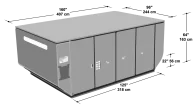
P1P_PAG Pallet
- Type: P1P, PAG PALLET
- Size:
- Base: 88″x 125″
- Height: 64″, x 96″,118″
- Weight Limit: 4,626kg
(LD),6,033kg (MD) - Loadable Aircraft Type: 747,747F, 777, Airbus
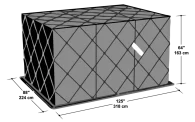 PEB Container
PEB Container
- Type: PEB CONTAINER
- Size:
- Base: 53″ x 88″
- Height: 84″
- Weight Limit: 1,800kg
(B-HIH -1,300 KG) - Loadable Aircraft Type: 747F
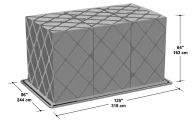 PLA Pallet
PLA Pallet
- Type: PLA PALLET
- Size:
- Base: 60.4″x 125″
- Height: 64″
- Weight Limit: 3,175kg
Loadable Aircraft Type: 747, 747F, 777, Airbus
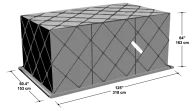 PMC_PQP_P6P Pallet
PMC_PQP_P6P Pallet
- Type: PMC, PQP, P6P PALLET
- Size: Base: 96″ x 125″
- Weight Limit: 5,035 kg (LD), 6,804 kg (MD)
- Loadable Aircraft Type: 747, 747F, 777, Airbus
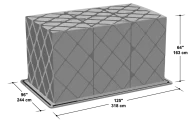 RKN Container
RKN Container
- Type: RKN CONTAINER
- ATA Code: LD3
- Internal Volume: 125.41 cu. ft. 3.55 mc
- Weight Limit: Weight: 1,588 kg
- Loadable Aircraft Type: 747, 747F, 777, Airbus
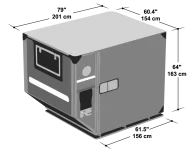 VZA_VRA
VZA_VRA
- Size: Fitted on PGA 20 ft. Pallet
- Max Width for Lower Car: 81″/ 205 cm
- Max Centre Height for Lower Car: 59″/ 150 cm
- Max Wheel Base: 312 cm
- Weight Limit: 2,500 kg(Upper Car)
9,300 kg c(Max Gross Weight of Pallet) - Loadable Aircraft Type: 747F Upper Deck

Unit Load Devices (ULD)
As of January 2023, over one million Unit Load Devices (ULDs) are in use globally. A ULD can take the form of an aircraft pallet, a pallet/net combination, or an aircraft container. These devices are considered removable parts of an aircraft and are regulated by civil aviation authorities. To be deemed airworthy, a ULD must be structurally sound, capable of restraining cargo, and designed to protect both the aircraft’s systems and structure during flight.
ULDs undergo regular testing to ensure they meet strict aviation authority standards. This rigorous process ensures that they continue to comply with design and safety regulations.
What sets ULDs apart from other aircraft components is that they are the only parts that can be removed and returned to the aircraft after handling by unregulated operators. Despite this, ULDs play a crucial role in flight safety by securing cargo and maintaining aircraft integrity during transit.
AIR FREIGHT FREIGHTER SPECIFICATIONS
| Make/Model | Max Payload Tonnes | Max Loadable Volume CBM3 | Cargo Hold Dims LxWxH cm | Cargo Door Size WxH cm |
| Cessna 406 Titan | 1.2 | 6.5 | 320 x 120 x 117 | 124 x 116 |
| Fairchild Metroliner II | 1.4 | 12 | 835 x 115 x 120 | 130 x 115 |
| Fairchild Metroliner III | 2.1 | 12 | 775 x 158 x 145 | 130 x 115 |
| Fairchild Metroliner 23 | 2.3 | 18 | 775 x 158 x 145 | 127 x 115 |
| Falcon 20 / 200 | 2.5 | 11 | 704 x 156 x 142 | 190 x 140 |
| Shorts 360 | 3.5 | 40 | 815 x 190 x 190 | 142 x 168 |
| Saab 340 | 3.8 | 40 | 1300 x 170 x 170 | 135 x 130 |
| Aerospatiale ATR42 | 4.6 | 40 | 1080 x 225 x 143 | 125 x 153 |
| Fokker 27 | 6.3 | 58 | 1336 x 210 x 190 | 228 x 175 |
| Antonov AN-26 | 6.5 | 45 | 1110 x 220 x 160 | 230 x 171 |
| Antonov AN-74 | 6.5 | 45 | 1000 x 215 x 220 | 226 x 220 |
| British Aerospace ATP | 8.2 | 78 | 1500 x 195 x 180 | 250 x 169 |
| Lockheed L-188 Electra | 15 | 135 | 2000 x 280 x 220 | 355 x 203 |
| Boeing 737-300F | 16 | 115 | 2100 x 310 x 220 | 340 x 215 |
| Antonov AN-12 | 18 | 95 | 1380 x 300 x 250 | 300 x 250 |
| Lockheed L-100 Hercules | 21 | 140 | 1707 x 302 x 274 | 302 x 274 |
| Boeing 727-200F | 23.5 | 144 | 2712 x 351 x 218 | 340 x 218 |
| Boeing 757F | 39 | 187 | 3327 x 353 x 218 | 340 x 218 |
| Airbus A300 B4F | 40 | 280 | 3900 x 477 x 223 | 358 x 256 |
| Douglas DC8-62 | 40 | 200 | 3400 x 317 x 203 | 355 x 215 |
| Douglas DC8-54/55 | 41 | 180 | 3100 x 317 x 203 | 355 x 215 |
| Ilyushin IL-76 | 45 | 180 | 1850 x 345 x 325 | 344 x 340 |
| Antonov AN-22 | 50 | 650 | 2640 x 430 x 430 | 430 x 430 |
| Lockheed L10-11 Tristar | 55 | 420 | 3300 x 360 x 274 | 431 x 284 |
| Boeing 767-300F | 55 | 400 | 3000 x 400 x 250 | 340 x 254 |
| Douglas DC10-30 | 65 | 400 | 3725 x 448 x 245 | 350 x 245 |
| McDonnell Douglas MD11 | 85 | 500 | 4800 x 350 x 245 | 355 x 245 |
| Boeing 747-100F | 90 | 675 | 4800 x 488 x 300 | 340 x 300 |
| Boeing 747-200F | 100 | 675 | 4900 x 488 x 300 | 340 x 300 |
| Boeing 777F | 100 | 625 | 4400 x 488 x 300 | 372 x 305 |
| Boeing 747-300/400F | 110 | 675 | 5000 x 488 x 300 | 340 x 300 |
| Antonov AN-124 | 120 | 800 | 3650 x 640 x 440 | 640 x 440 |
| Antonov AN-225 | 250 | 1100 | 4300 x 640 x 440 | 640 x 440 |
INCOTERMS
INCOTERMS are standard trade terms most commonly used in international freight contracts for sale of goods. It is essential that you are aware of your terms of trade prior to shipment.
EXW – EX WORKS (… named place of delivery)
The Seller’s only responsibility is to make the goods available at the Seller’s premises. The Buyer bears full costs and risks of moving the goods from there to destination.
FCA – FREE CARRIER (… named place of delivery)
The Seller delivers the goods, cleared for export, to the carrier selected by the Buyer. The Seller loads the goods if the carrier pickup is at the Seller’s premises. From that point, the Buyer bears the costs and risks of moving the goods to destination.
CPT – CARRIAGE PAID TO (… named place of destination)
The Seller pays for moving the goods to destination. From the time the goods are transferred to the first carrier, the Buyer bears the risks of loss or damage.
CIP– CARRIAGE AND INSURANCE PAID TO (… named place of destination)
The Seller pays for moving the goods to destination. From the time the goods are transferred to the first carrier, the Buyer bears the risks of loss or damage. The Seller, however, purchases the cargo insurance.
DAT – DELIVERED AT TERMINAL (… named terminal at port or place of destination)
The Seller delivers when the goods, once unloaded from the arriving means of transport, are placed at the Buyer’s disposal at a named terminal at the named port or place of destination. “Terminal” includes any place, whether covered or not, such as a quay, warehouse, container yard or road, rail or air cargo terminal. The Seller bears all risks involved in bringing the goods to and unloading them at the terminal at the named port or place of destination.
DAP – DELIVERED AT PLACE (… named place of destination)
The Seller delivers when the goods are placed at the Buyer’s disposal on the arriving means of transport ready for unloading at the names place of destination. The Seller bears all risks involved in bringing the goods to the named place.
DDP – DELIVERED DUTY PAID (… named place)
The Seller delivers the goods -cleared for import – to the Buyer at destination. The Seller bears all costs and risks of moving the goods to destination, including the payment of Customs duties and taxes.
MARITIME TERMS
FAS – FREE ALONGSIDE SHIP (… named port of shipment)
The Seller delivers the goods to the origin port. From that point, the Buyer bears all costs and risks of loss or damage.
FOB– FREE ON BOARD (… named port of shipment)
The Seller delivers the goods on board the ship and clears the goods for export. From that point, the Buyer bears all costs and risks of loss or damage.
CFR– COST AND FREIGHT (… named port of destination)
The Seller clears the goods for export and pays the costs of moving the goods to destination. The Buyer bears all risks of loss or damage.
CIF – COST INSURANCE AND FREIGHT (… named port of destination)
The Seller clears the goods for export and pays the costs of moving the goods to the port of destination. The Buyer bears all risks of loss or damage. The Seller, however, purchases the cargo insurance.
EXPORT DOCUMENTATION
An Overview of Bills of Lading: Ensuring Precision in Shipping
Why is it crucial to verify Bill of Lading details?
The Bill of Lading meticulously captures the smallest shipment details, providing an exact representation of your cargo. This document is pivotal for identifying your shipment and becomes invaluable in dispute scenarios, especially when handling liability claims for damaged, lost, or delayed shipments.
When is the Bill of Lading Issued?
As a specialist in international shipping and freight, CargoMaster places utmost importance on accuracy in shipping dates, marks, and cargo descriptions when issuing the Bill of Lading. Adhering to maritime regulations, CargoMaster ensures precise details, recognising the significance of the date on the Bill of Lading, marking the enforcement of the shipment contract.
How is the Bill of Lading Compiled?
The compilation of a Bill of Lading involves several checks within the export documentation flow. Freight Forwarders like CargoMaster play a crucial role, ensuring accurate details such as container and bolt seal numbers, vessel information, weights, pieces loaded, and voyage numbers. While Bills of Lading are typically issued after the vessel sails, special requests may lead to earlier issuances.
A Contract in Documentation: The Bill of Lading
Functioning as a contract between the International Shipping Company and the cargo shipper, the Bill of Lading mirrors other contractual agreements, like a residential tenancy agreement. To meet international standards, Bills of Lading must align with conventions such as The Hague Rule, Hague-Visby Rule, Hamburg Rule, and The Carriage of Goods by Sea Act Australia 1991.
Insight into the Documentation Timeline
Disputes regarding Bill of Lading issues primarily emerge in cargo exportation. The export documentation flow involves meticulous coordination, ensuring the timely gathering of information from various sources. CargoMaster, handling machinery and out-of-gauge cargo, faces additional documentation requirements for compliance with international regulations.
International Freight Certificates: Navigating Export Documentation
Certificate of Free Sale (CFS)
A crucial document confirming the approval to sell goods in Australia, essential for customs clearance and import processes in certain overseas markets.
When exporting to certain countries you will require a Certificate of Free Sale (CFS), also called an export certificate or certificate of export. An Export Certificate confirms in writing that you can sell your goods in the Australian market and that there are no restrictions. The Certificate of Free Sale certifies that you have the approval of relevant authorities to sell your goods in Australia.
The overseas purchaser of your products may have problems with customs clearance and registration process’s if you do not provide a CFS when required, your buyer may not be able to import your product into their country. You may need to present this certificate as part of the customs clearance or registration process.
A CFS is often requested for products such as:
- food-based products
- medical parts, devices and products
- certain complementary, prescription, and over the counter medicines.
Not all countries require a CFS, the need for a Certificate of Free Sale will depend on your product and your export market. Speak with your buyer to find out if you need a CFS.
Where can I get a Certificate of Free Sale?
To find out more and apply for a Certificate of Free Sale (CFS) visit:
- Department of Health Therapeutic Goods Administration
- Department of Agriculture, Water and the Environment
- Australian Chamber of Commerce and Industry (ACCI)
ATA Carnet (Admission Temporary Admission)
Facilitates the temporary entry of goods into foreign countries, providing exemptions for import duties and taxes. Commonly used for high-value goods at exhibitions, trade shows, motorsports, and audiovisual production.
An ATA Carnet is an international document that permits temporary the temporary entry of commodities into overseas countries. Carnets are used for goods that are intended to be imported for a short period of time, then exported back to the country of origin. It provides exemptions for import duties and taxes. It is most often used for high-value goods imported for specific uses.
Typical goods that may be transported under a Carnet:
- cars, bikes, boats, caravans or trailers for exhibitions and trade shows
- es or cars and other vehicles used for motorsports
- equipment, trucks, and machinery for mining or farming
- cameras and other equipment used for filming and audiovisual production.
To apply for a Carnet contact The Australian Chamber Of Commerce and Industry
Australian Chamber of Commerce and Industry www.australianchamber.com.au/international/certificates-of-origin (ACCI).
Phytosanitary Certificate
Required for regulated commodities like plants and plant products, certifying compliance with quarantine regulations and the absence of pests.
Phytosanitary Certificates available from the Department of Agriculture, Water and Environment.
Certificate of Origin (CoO)
Government-certified or authorised entity-issued document confirming the origin of commodities, essential for Free Trade Agreements (FTAs) and customs clearance.
Note: Always check specific product and market requirements for accurate documentation needs.
Certificates of Origin are needed when Origin when
- exporting to countries where Australia has a current Free Trade Agreement (FTA)
- it is requested by the importer for customs clearance
- it is specified in a Documentary Letter of Credit.
Some agreements will allow for a self-certification, while others require a certificate from an authorised body. Self-certification carries a high level of risk and is not recommended for new exporters.
There are 2 types of Certificates of Origin
- Preferential certificates
A Preferential certificate will assist customs authorities to confirm your compliance with trade agreements made, tariffs and and Rules of Origin. Rules of Origin (ROO) are an agreed set of rules between countries that share a preferential trade agreement, such as a Free Trade Agreement (FTA). ROO set out the criteria for which goods are eligible for free or preferential import tariffs. Typically, they require a product to be entirely produced in a one of the participating countries or have a minimum percentage of the value produced there. They can be complex to understand so speak with your customs broker or freight forwarder or visit the DFAT Free Trade Agreement Portal.
Note: If Australia has a Free Trade Agreement (FTA) with the country you are exporting to you can apply for a Preferential certificate
2. Non-preferential certificates
Local governments of most countries issue non-preferential certificates to collect statistical data and ensure you are meeting:
- government sanctions
- anti-dumping rules
- quotas
- general tariffs.
Where can I get a Certificate of Origin?
To find out more and apply for a Certificate of Origin (COO) visit:
- Australian Chamber of Commerce and Industry (ACCI)
- Australian Industry Group (AI Group)
- International Export Certification Services (IECS)
For information about the documents needed for specific products check out.
CargoMaster ensures a seamless freight experience, combining expertise, accuracy, and compliance for precise cargo transport. Call us at 1300 767 136 for tailored shipping solutions and competitive rates.
Thank-you for contacting us, it’s great that you have selected our contact us page, we appreciate the opportunity, if your shipment relates to air freight or less than a container load sea freight, please include the weight and dimensions of each piece in your request. We look forward to working with you, please feel free to call at any time.
Call 1300 767 136

